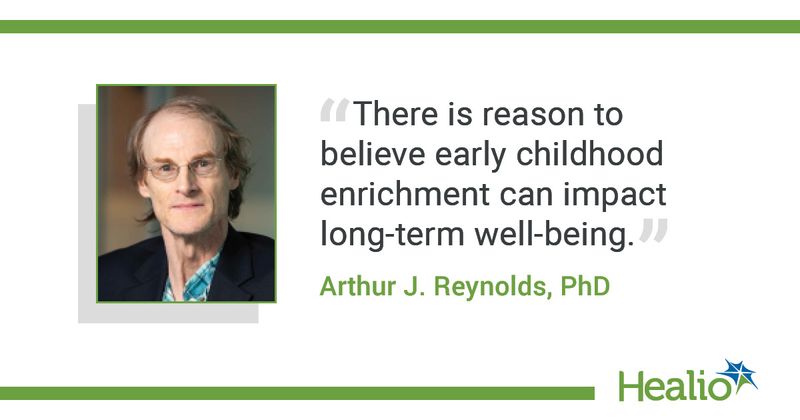Study sees link between preschool, cardiovascular health in midlife
Key takeaways:
- Education is the leading social determinant of health.
- Participation in preschool was linked to improved cardiovascular health among study participants in midlife.
A study linked participation in preschool programs to cardiovascular health in midlife, according to findings published in JAMA Pediatrics.
The researchers assessed connections between early childhood education and cardiovascular health using the American Heart Association’s (AHA’s) Ideal Cardiovascular Health Index (iCVH) and data from the Chicago Longitudinal Study’s Child-Parent Center (CPC) program, which provides comprehensive educational and family support services to counteract the effects of poverty.

“We found a couple of years ago that CPC participation reduced [cardiovascular disease] risk via the well-known Framingham risk score,” Arthur J. Reynolds, PhD, a professor at the University of Minnesota Institute of Child Development and co-author of the study, told Healio. “Since the AHA index has not been used in the education field, especially early childhood education — and there is reason to believe early childhood enrichment can impact long-term well-being — assessing this connection made sense.”
Reynolds and colleagues studied data from the Chicago Longitudinal Study, which tracked 989 children aged 3 to 4 years who attended CPC preschools from 1983 to 1985. As a comparison, they used a group of 550 children who attended usual early childhood education programs.
The researchers received completed surveys from 1,124 of these children and calculated iCVH scores for 1,042. The average score was 4.05, with 27.9% of participants having a score of 3 or lower and 29.7% a score of 5 or greater. Children who attended CPC programs had a mean score of 4.06 compared with children who did not attend the programs, whose median score was 3.89 — a significant difference, the researchers said.
“Given long-run effects we've seen, such as health insurance, education, crime prevention and income, the findings make sense and a sizable part of the impact was explained by educational attainment,” Reynolds said. “Promoting the latter is the purpose of the program and education we know is the leading social determinant of health.”
The findings support the generalizability of associations between early education and midlife cardiovascular health using a broader and more positive measure, Reynolds said.
“Supportive and enriching early childhood experiences that promote school success and family engagement in school and in the community matter,” Reynolds said. “Whether through referral to high-quality programs, home visiting, and access to education and health services that address family and child needs is very important for pediatricians and health professional to do. Working with schools and having health services in schools is also important.”
Reynolds said they plan to follow the cohort through midlife to see if impacts sustain and whether there are reduced rates of cardiovascular disease onset as well as better lifestyle behaviors, such as nutrition and physical activity.
“These [patients] may be affected by the supports and resources available in the neighborhoods families live, economic, and family circumstances,” Reynolds said. “Who benefits most and least and why are important questions.”
